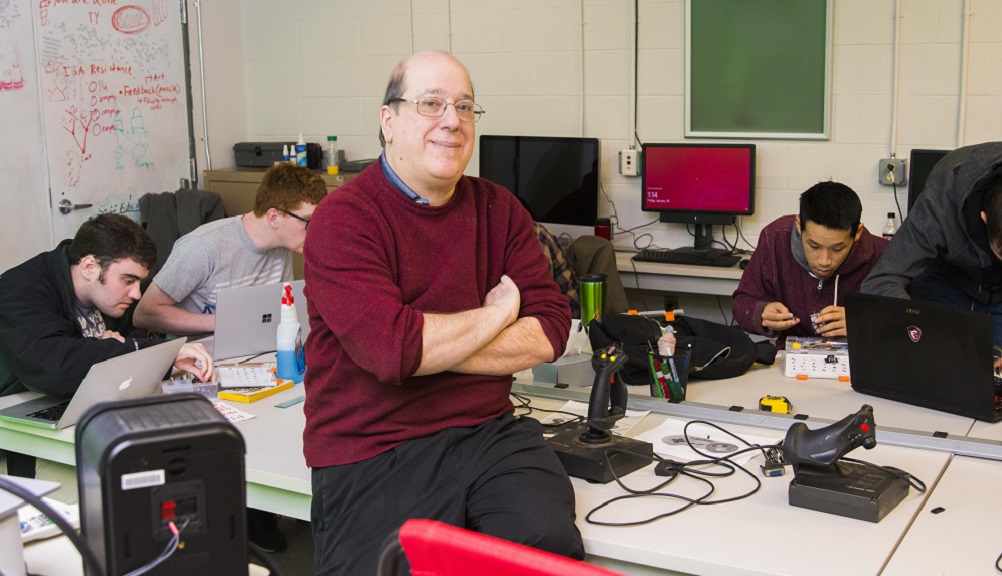Do you remember the best summer of your life?
You might recall vivid details of a joyous family vacation or walks in the woods. Cookouts. A fleeting romance.
But memory can be a tricky thing. Once-sharp details soften over time and can blend and re-arrange themselves. Sometimes what you’re left with is just a feeling—an emotion triggered by a certain smell, or the position of the sun in the sky.
You hold tight onto that feeling—sometimes too tight, as the fictitious Dr. Julia Adler demonstrates in “Memoirscape,”an immersive and interactive exhibit designed and built by graduate and postgraduate students in WPI’s Interactive Media and Game Development program.
Wrestling with the concept of memory is just one of the many layers of the innovative role-playing game, built out in the sub-basement of Fuller Laboratories. Designed as an “anti-escape room,” it’s an experiential art piece that uses all the physical senses to communicate environmental storytelling.
“Memoirscape” invites players to work at their own pace to piece together subtle clues about what happened during the long-lost summer of 1986 for Dr. Adler, a professor experimenting with “memory technology.” Players may get a sense that something is askew. Borrowing a term from traditional video games, things get a little “glitchy,” and players may start to notice that summer in Queens might not have been so perfect after all.
Members of the team behind the experience say they’re surprised at how differently people approach it, and that’s just fine. There really isn’t a wrong way to play it.
Kathleen Morrissey, a second-year PhD student who served as producer and director, said some students rip through the game as if it were a traditional escape room situation, solving the puzzle in 20 minutes. Other players linger, and some just want to stay and absorb the details. Still others go through it multiple times, coming back to find out what they might have missed.
“We don’t want to control how players interact with the room and what they take away from it,” she said. “We just want them to feel seen by the experience.”
Tending and Befriending
The idea of making the game a place where you want to stay is part of an emerging gaming trend Melissa Kagen, assistant professor of teaching in IMGD, refers to as “cozy games” that emphasize safety, abundance, and softness. They’ve been a popular phenomenon in gaming for a decade or two—games like Harvest Moon, Animal Crossing, and Unpacking are a few that have taken off since the start of the COVID-19 pandemic.
“It’s about tending and befriending,” says Kagen, who served as narrative and acting director for Memoirscape. “You give the players the experience of kindness and gift giving. They come out of the game feeling calmer. The challenge for this team was to create an interactive media ‘escape room’ experience that was also cozy.”
In a way, the increasing popularity of cozy games could be viewed as a reaction to the pressures and worries of modern life.
“I think that the world right now feels pretty stressed and full of anxiety; there are lot of really enormous problems out there,” Kagen said. “And whoever you are, wherever you are, you are probably feeling the weight of some of them. Cozy games meet you where you are. They let you experience a sense of “okay-ness,” a sense that all is right with the world, and that everything matters. You make mundane actions that make you feel good about yourself, that make you feel like everything really is okay. That seems to be what a lot of players need to experience right now.”
“Players are encouraged to linger and take their time,” Morrissey said.
“It’s not a test. I don’t want people to enter the space and just rush through it,” she added. “I want them to savor and appreciate some of the decisions we made. I want them to feel relaxed enough to let the room change them, instead of having them try to prove some sort of competency.”





